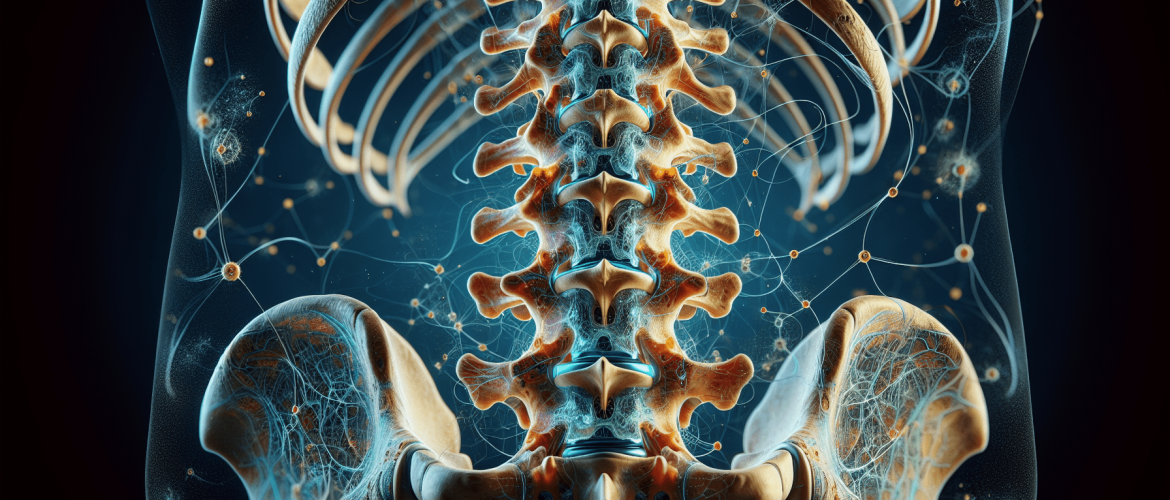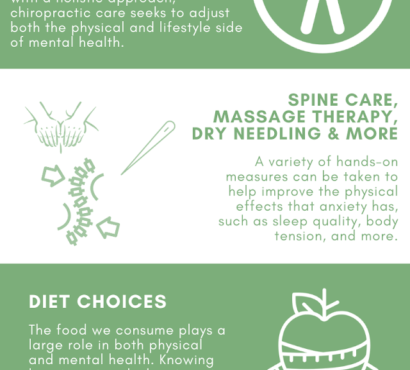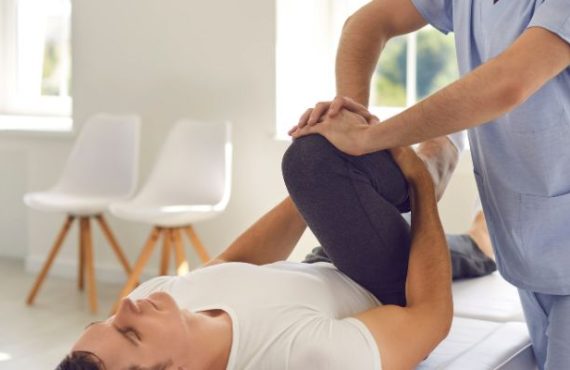Are you curious about the intricate workings of the human spine? Look no further, as we delve into the fascinating realm of the biomechanics of the spine. At Henry Chiropractic in Pensacola, Florida, Dr. Craig Henry and Dr. Aaron Hixon are dedicated to improving the health and wellness of their patients. With a passion for helping others and a wealth of knowledge in chiropractic care, they explore the biomechanics of the spine to offer effective solutions for back and neck pain, and to enhance overall well-being. Join us on this journey of discovery as we uncover the wonders of the spine and the transformative benefits of chiropractic care.
Table of Contents
What is Biomechanics?
Biomechanics is a fascinating field of study that focuses on understanding the mechanics of living organisms, particularly the human body. It combines principles of mechanics, physics, and biology to analyze how forces and movements affect the structure and function of biological systems. By examining the biomechanics of the spine, we can gain valuable insights into its anatomy, movement, and stability.
Definition of biomechanics
Biomechanics can be defined as the study of the mechanical aspects of living organisms, including their structure, function, and movement. It involves the analysis of forces and their effects on the body, as well as the way in which the body responds and adapts to these forces. In relation to the spine, biomechanics helps us understand how mechanical forces impact its health and overall function.
Importance of studying biomechanics
Studying biomechanics is crucial for several reasons. Firstly, it provides valuable insights into the human body, allowing us to understand how it functions and moves. By understanding biomechanics, we can develop strategies to prevent injuries and enhance performance in various activities. Additionally, biomechanics plays a vital role in rehabilitation and designing prosthetic devices, ensuring a better quality of life for individuals with physical impairments.

Biomechanics of the human body
The human body is an intricate system of bones, muscles, ligaments, and joints that work together to allow us to perform various movements. Biomechanics plays a crucial role in understanding how these components interact and function. When it comes to the spine, the biomechanics of the human body provide insights into its structure, movement, and stability. By studying how forces act on the spine, we can better understand its mechanics and develop strategies to maintain its health and prevent injuries.
Introduction to the Spine
The spine, also known as the vertebral column, is a pillar-like structure that runs along the back of the body. It consists of a series of bones called vertebrae, which are stacked on top of each other. The spine plays a vital role in providing support to the body and protecting the spinal cord, which is responsible for transmitting signals between the brain and the rest of the body. Let’s delve deeper into the anatomy, functions, and different types of spinal curves.
Anatomy of the spine
The spine is divided into different regions, each with its own unique characteristics. Starting from the top, we have the cervical spine, which consists of seven vertebrae and supports the head and neck. Below the cervical spine is the thoracic spine, which comprises twelve vertebrae and connects to the ribcage. The lumbar spine follows with five vertebrae, supporting the lower back. Finally, we have the sacral region, which is made up of five fused vertebrae and connects the spine to the pelvis.
Functions of the spine
The spine serves several important functions in the human body. Firstly, it provides structural support, allowing us to stand upright and maintain our posture. It also protects the delicate spinal cord and nerve roots from injury. Additionally, the spine allows for movement and flexibility, enabling us to perform activities such as bending, twisting, and turning. Lastly, the spine plays a crucial role in load distribution, evenly distributing the forces acting on the body.
Types of spinal curves
The spine has four natural curves that help distribute forces and maintain balance. These curves are known as the cervical lordosis, thoracic kyphosis, lumbar lordosis, and sacral kyphosis. The cervical and lumbar regions have inward curves (lordosis), while the thoracic and sacral regions have outward curves (kyphosis). These curves work together to absorb shock and distribute loads, ensuring optimal efficiency and minimizing the risk of injury.
Mechanical Forces Acting on the Spine
The spine is subjected to various mechanical forces during everyday activities and movements. Understanding these forces is crucial in comprehending the impact they have on spinal health. Let’s explore the different types of mechanical forces acting on the spine.
Compression
Compression refers to a force or load that pushes or squeezes the spine together. It is a common force experienced during activities such as carrying heavy objects, jumping, or standing upright. Prolonged compression can lead to degeneration of the intervertebral discs and potentially cause conditions such as herniated discs or spinal stenosis.
Tension
Tension is the opposite of compression and occurs when the spine is stretched or pulled apart. It is commonly experienced during activities that involve hanging, like in gymnastics or rock climbing. Excessive tension can result in strains or sprains of the muscles and ligaments surrounding the spine.
Shear
Shear force occurs when two parts of the spine move parallel to each other in opposite directions. It commonly occurs during movements such as bending, twisting, or sliding. Shear forces can lead to damage to the intervertebral discs, ligaments, and facet joints, which may cause conditions like spondylolisthesis or disc degeneration.
Bending
Bending forces act on the spine when it is subjected to a load that causes it to bend forward, backward, or to the side. These forces are commonly experienced during activities like lifting heavy objects or performing exercises that involve bending movements. Prolonged or repetitive bending can strain the muscles, ligaments, and discs of the spine, leading to pain or injury.
Twisting
Twisting forces occur when the spine rotates or twists. They can be experienced during activities like swinging a golf club or twisting the torso while playing sports. Excessive or repetitive twisting can put stress on the spinal discs and facet joints, potentially causing conditions like disc herniation or facet joint syndrome.

Load Distribution in the Spine
The load distribution in the spine is a complex process involving the vertebral column, intervertebral discs, and spinal ligaments. Understanding how the spine distributes and absorbs forces is crucial for maintaining its health and preventing injuries.
Vertebral column and load distribution
The vertebral column plays a crucial role in load distribution along the spine. Each vertebra is designed to distribute the forces acting on the spine evenly. The shape and structure of the vertebrae provide stability, while the intervertebral discs and spinal ligaments help absorb and distribute loads. This ensures that the forces acting on the spine are spread out evenly, reducing the risk of localized stress and injury.
Role of intervertebral discs
Intervertebral discs are the flexible and shock-absorbing cushions located between each pair of vertebrae. They play a crucial role in load distribution by absorbing and distributing forces acting on the spine. The discs consist of a tough outer layer called the annulus fibrosus and a gel-like center called the nucleus pulposus. This unique structure allows the discs to withstand compression and maintain their shape, ensuring optimal load distribution and spine health.
Spinal ligaments and load-bearing capacity
Spinal ligaments provide stability and support to the spine while also contributing to load-bearing capacity. The ligaments help hold the vertebrae together and prevent excessive movement, especially during activities that involve bending, twisting, or flexing the spine. They work in conjunction with the muscles to provide overall spinal stability and ensure efficient load distribution.
Spinal Stability
Spinal stability is essential for maintaining a healthy and pain-free spine. It allows for proper movement, prevents excessive stress on the structures of the spine, and reduces the risk of injury. Let’s explore the muscles, joints, and exercises that contribute to spinal stability.
Muscles and joints supporting spinal stability
Several muscles and joints contribute to spinal stability. The deep muscles of the back, such as the multifidus and transverse abdominis, play a crucial role in stabilizing the vertebrae and maintaining proper alignment. The spinal joints, including the facet joints, also contribute to stability by guiding and controlling the movement of the spine. When these muscles and joints work together, they provide a strong foundation for spinal stability.
Role of core muscles
Core muscles, which include the muscles of the abdomen, lower back, and pelvis, are vital for spinal stability. They provide support to the spine and help maintain proper alignment and posture. Strengthening the core muscles improves spinal stability and reduces the risk of injuries and pain. Exercises such as planks, bridges, and deadlifts are effective in targeting and strengthening the core muscles.
Spinal stabilization exercises
Engaging in regular spinal stabilization exercises is crucial for maintaining a healthy spine. These exercises focus on strengthening the muscles that support the spine, improving posture, and enhancing overall stability. Examples of spinal stabilization exercises include Pilates, yoga, and specific exercises that target the core and back muscles. Incorporating these exercises into your routine can significantly reduce the risk of spinal injuries and promote spinal health.
Common Spine Injuries
Spine injuries can cause significant pain, discomfort, and limitations in daily activities. Understanding the common types of spine injuries can help raise awareness and promote proactive measures for prevention and treatment.
Herniated discs
A herniated disc, also known as a slipped or ruptured disc, occurs when the soft inner core of an intervertebral disc pushes through the tough outer layer. This can result in pressure on nearby nerves, leading to pain, numbness, or weakness in the affected area. Herniated discs can be caused by injury, aging, or degenerative conditions, and often require a combination of conservative treatments, such as physical therapy, and in severe cases, surgery.
Spondylolisthesis
Spondylolisthesis is a condition characterized by one vertebra slipping forward or backward in relation to the adjacent vertebrae. This displacement can lead to instability, nerve compression, and spinal deformity. Spondylolisthesis is often caused by congenital abnormalities, trauma, or repetitive strain on the spine. Treatment options vary depending on the severity of the condition and may include physical therapy, bracing, or surgery.
Spinal stenosis
Spinal stenosis refers to the narrowing of the spinal canal, which puts pressure on the spinal cord and nerves. This can lead to pain, numbness, weakness, and difficulty with mobility. Spinal stenosis can be caused by aging, degenerative changes in the spine, or certain conditions such as arthritis. Treatment options for spinal stenosis may include medications, physical therapy, corticosteroid injections, or surgery in severe cases.
Sciatica
Sciatica is a condition characterized by pain that radiates along the path of the sciatic nerve, which runs from the lower back through the hips and buttocks and down each leg. It is often caused by compression or irritation of the nerve roots in the lumbar spine. Common symptoms include sharp, shooting pain, numbness, tingling, and muscle weakness. Treatment options for sciatica include rest, pain medication, physical therapy, and in some cases, surgery.
Muscle strains
Muscle strains in the back are a common type of spine injury. They occur when the muscles or tendons supporting the spine are overstretched or torn. Common causes of muscle strains include sudden movements, heavy lifting, or improper posture. Symptoms may include pain, muscle spasms, stiffness, and difficulty moving. Treating muscle strains involves rest, applying heat or cold therapy, gentle stretching exercises, and over-the-counter pain medication.
Effects of Poor Posture on the Spine
Maintaining good posture is essential for a healthy spine. Poor posture, on the other hand, can have detrimental effects on the spine’s structure and function. Let’s explore some of the common effects of poor posture on the spine.
Forward head posture
Forward head posture, also known as “text neck,” is a common consequence of spending long hours hunched over electronic devices or sitting at a desk. It involves an excessive forward tilt of the head, resulting in strain on the neck, upper back, and shoulders. Over time, forward head posture can lead to muscle imbalances, poor spinal alignment, and increased risk of neck and shoulder pain.
Kyphosis
Kyphosis refers to an exaggerated forward rounding of the upper back. It can be caused by factors such as poor posture, osteoporosis, or structural abnormalities. Kyphosis can lead to increased stress on the vertebrae and intervertebral discs, resulting in pain and discomfort. Severe cases of kyphosis may require medical intervention, such as bracing or surgery.
Lordosis
Lordosis is an excessive inward curvature of the spine, most commonly observed in the lumbar region (lower back) or cervical region (neck). It can be caused by factors such as poor posture, muscle imbalances, or structural abnormalities. Lordosis can lead to increased stress on the spine, resulting in pain, limited mobility, and an increased risk of injuries.
Scoliosis
Scoliosis is a condition characterized by an abnormal sideways curvature of the spine. It can develop during childhood or adolescence and may be caused by factors such as genetics, muscle imbalances, or abnormal bone growth. Scoliosis can lead to uneven shoulders, hips, and waist, as well as pain and difficulty with breathing in severe cases. Treatment options for scoliosis range from observation and physical therapy to bracing or, in severe cases, surgery.
Preventing and Treating Spine Injuries
Preventing spine injuries is crucial for maintaining a healthy spine and overall well-being. By adopting proper ergonomics, maintaining good posture, and participating in exercises that strengthen the spine, individuals can significantly reduce the risk of injuries and promote spinal health. Let’s explore some preventive measures and treatment options for spine injuries.
Proper ergonomics
Maintaining proper ergonomics is essential for preventing spine injuries, especially for those who spend long hours sitting or performing repetitive tasks. This includes having an ergonomic workstation setup, using supportive chairs with lumbar support, and taking regular breaks to stretch and move. By ensuring that the spine is properly aligned and supported during daily activities, individuals can prevent unnecessary strain and reduce the risk of injuries.
Maintaining good posture
Good posture is key to maintaining a healthy spine. This involves keeping the spine properly aligned in a neutral position, whether sitting, standing, or walking. By maintaining good posture, individuals can distribute loads evenly across the spine, reduce stress on the supporting structures, and prevent the development of conditions such as kyphosis, lordosis, and scoliosis. Regularly practicing posture exercises and being mindful of body alignment can help promote good posture habits.
Exercise and strengthening for spine health
Regular exercise and strengthening activities are crucial for maintaining a healthy spine. By engaging in exercises that target the core, back, and supporting muscles, individuals can improve spinal stability, flexibility, and overall strength. Exercise options for spine health include activities such as swimming, yoga, Pilates, and strength training. It is important to consult with a healthcare professional or a qualified exercise specialist to develop a personalized exercise program suitable for individual needs and capabilities.
Chiropractic care for spine maintenance
Chiropractic care is a non-invasive, drug-free approach to spine health. Chiropractors are trained to assess, diagnose, and treat conditions related to the musculoskeletal system, including the spine. Through manual adjustments, spinal manipulations, and other techniques, chiropractors can help restore proper spinal alignment, alleviate pain, and improve overall function. Chiropractic care can be an effective approach for maintaining spinal health, preventing injuries, and managing conditions such as herniated discs or chronic pain.
Role of Chiropractic Care in Spine Health
Chiropractic care plays a significant role in promoting and maintaining spinal health. Let’s explore what chiropractic care entails, the benefits of chiropractic adjustments, the different techniques used, and hear from patients who have benefited from chiropractic care.
What is chiropractic care?
Chiropractic care is a healthcare profession that focuses on the diagnosis, treatment, and prevention of disorders of the musculoskeletal system, particularly the spine. Chiropractors utilize manual adjustments, spinal manipulations, and other techniques to restore proper alignment, alleviate pain, improve function, and promote overall well-being. Chiropractic care takes a holistic and patient-centered approach, considering factors such as lifestyle, nutrition, and exercise habits to optimize spinal health.
Benefits of chiropractic adjustments
Chiropractic adjustments offer numerous benefits for spinal health. They can help restore proper alignment, relieve pressure on nerves, reduce pain and inflammation, and improve overall function. Chiropractic adjustments are non-invasive and drug-free, making them a safe and effective option for individuals seeking natural approaches to managing spine-related conditions. Regular chiropractic care can help prevent injuries, enhance performance, and promote optimal spinal health.
Chiropractic techniques for spine alignment
Chiropractors utilize various techniques to restore proper spinal alignment and function. These techniques may include manual adjustments, spinal manipulations, mobilizations, and soft tissue therapies. Through these techniques, chiropractors target specific areas of misalignment or dysfunction and apply controlled forces to restore proper movement and alignment of the spine. The choice of technique depends on the individual’s condition, preferences, and the chiropractor’s expertise.
Patient testimonials
Many patients have experienced positive outcomes and improved spinal health through chiropractic care. Testimonials from patients who have benefited from chiropractic adjustments often highlight reduced pain, improved mobility, and enhanced overall well-being. These firsthand accounts serve as strong evidence of the effectiveness of chiropractic care in promoting spinal health and managing various spine-related conditions.
Conclusion
Understanding the biomechanics of the spine is crucial for maintaining a healthy and pain-free back. By comprehending the anatomy, functions, and mechanical forces acting on the spine, we can take proactive steps to prevent injuries and promote optimal spinal health. Through proper ergonomics, maintaining good posture, engaging in regular exercise, and seeking chiropractic care, individuals can ensure the well-being of their spine. Embracing these practices and taking advantage of available resources for further information can empower individuals to lead healthier lives and enjoy the benefits of a well-functioning spine.
Resources for further information:
- Henry Chiropractic: Website – https://drcraighenry.com/
- Henry Chiropractic: Physical Address – 1823 N 9th Ave, Pensacola, FL 32503
- Henry Chiropractic: Phone – (850) 435-7777







